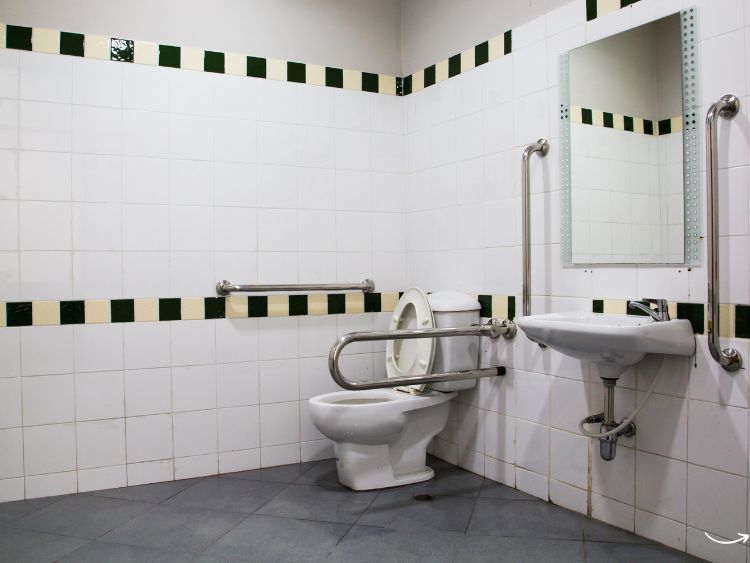When your toilet handle breaks or becomes loose, it can be a real hassle. Not only does it disrupt the functionality of your bathroom, but it can also lead to more significant issues if not addressed promptly. Fortunately, replacing a toilet handle is a straightforward task that you can do yourself with minimal tools and time. In this comprehensive guide, we’ll walk you through the process of toilet handle replacement, ensuring you have all the knowledge and confidence to tackle this DIY project.
Table of Contents
- Introduction
- Tools and Materials Needed
- Understanding Toilet Handles
- Step-by-Step Guide to Replacing a Toilet Handle
- Identify the Problem
- Purchase the Right Replacement Handle
- Remove the Old Handle
- Install the New Handle
- Common Issues and Troubleshooting
- FAQs About Toilet Handle Replacement
- Conclusion
- Authoritative Links
Introduction
Is your toilet handle giving you trouble? Whether it’s wiggling around, sticking, or not flushing at all, replacing it might just save your day. This guide will help you understand how to replace a toilet handle with ease, using simple steps and readily available tools. Not only will you save money on a plumber, but you’ll also gain a sense of accomplishment by fixing it yourself.
Tools and Materials Needed
Before you dive into the replacement process, gather the necessary tools and materials:
- New toilet handle
- Adjustable wrench
- Screwdriver
- Pliers
- Cleaning cloth
Having these tools on hand will ensure a smooth and efficient replacement process.
Understanding Toilet Handles
Toilet handles come in various designs and mechanisms, but they all serve the same purpose: to trigger the flushing process. The handle is connected to a lift arm inside the tank, which raises a flapper or valve to release water into the bowl, initiating the flush. Understanding this mechanism is crucial for successful replacement.
Step-by-Step Guide to Replacing a Toilet Handle
Identify the Problem
First things first, diagnose the issue with your current handle. Is it loose, broken, or simply not functioning? Identifying the problem will help you determine if a replacement is necessary or if a simple adjustment can fix the issue.
Purchase the Right Replacement Handle
Head to your local hardware store or search online for a replacement handle. Ensure the new handle matches the style and type of your current one. Handles vary in design, so getting the correct one is crucial.
Remove the Old Handle
- Turn off the Water Supply: Locate the shut-off valve near the base of the toilet and turn it clockwise to stop the water flow.
- Drain the Tank: Flush the toilet to empty the tank. You might need to hold down the handle to ensure all the water drains out.
- Remove the Lid: Carefully lift the lid off the tank and set it aside.
- Disconnect the Handle: Use an adjustable wrench to loosen the nut securing the handle to the tank. Turn the nut counterclockwise to remove it.
- Detach the Lift Arm: Remove the chain or lift wire attached to the handle’s lift arm.
- Extract the Old Handle: Pull the handle out from the outside of the tank.
Install the New Handle
- Insert the New Handle: Slide the new handle into the hole from the outside of the tank.
- Secure the Handle: Attach the nut to the handle on the inside of the tank and tighten it clockwise with your wrench. Be careful not to overtighten, as this could crack the porcelain.
- Reconnect the Lift Arm: Attach the lift arm to the chain or lift wire, ensuring it’s not too tight or too loose.
- Test the Handle: Turn the water supply back on and test the new handle by flushing the toilet. Make any necessary adjustments to the chain to ensure a smooth flush.
Common Issues and Troubleshooting
Even with a successful installation, you might encounter some issues. Here are a few common problems and their solutions:
- Handle is Loose: Ensure the nut inside the tank is tightened properly.
- Toilet Won’t Flush: Check the chain connection and adjust the length if necessary.
- Handle is Stiff: Lubricate the handle mechanism or ensure it’s installed without obstructions.
FAQs About Toilet Handle Replacement
Q: How do I know if my toilet handle needs replacing?
A: If your handle is loose, broken, or doesn’t trigger a flush, it’s time to replace it.
Q: Can I use any toilet handle as a replacement?
A: It’s best to use a handle that matches your toilet’s design and mechanism to ensure compatibility.
Q: How often should a toilet handle be replaced?
A: There’s no specific timeline, but handles typically last several years. Replace it when it no longer functions properly.
Q: What if my new handle doesn’t fit?
A: Double-check the handle type and size. You may need to purchase a different model that fits your toilet.
Q: Can I replace a toilet handle myself?
A: Absolutely! With the right tools and instructions, replacing a toilet handle is a simple DIY project.
Conclusion
Replacing a toilet handle is a quick and easy DIY task that can save you money and hassle. By following this guide, you’ll be able to tackle the replacement with confidence, ensuring your toilet functions smoothly. Remember to choose the right handle, gather the necessary tools, and follow the steps carefully. If you encounter any issues, refer to the troubleshooting section or seek professional help.
Authoritative Links
For more information on toilet handle replacement and related topics, check out these resources:
- https://www.familyhandyman.com/project/how-to-replace-a-toilet-handle
- https://www.homedepot.com/c/ah/how-to-replace-a-toilet-handle/9ba683603be9fa5395fab907c2cbf5f
- https://www.thisoldhouse.com/plumbing/21018526/how-to-replace-a-toilet-handle
- https://www.lowes.com/n/how-to/how-to-replace-a-toilet-handle
By now, you should feel well-equipped to replace your toilet handle. So, roll up your sleeves and get started on this satisfying home improvement project!



